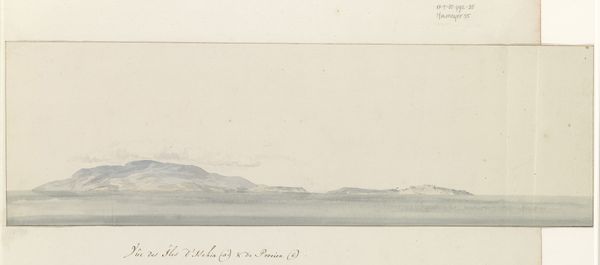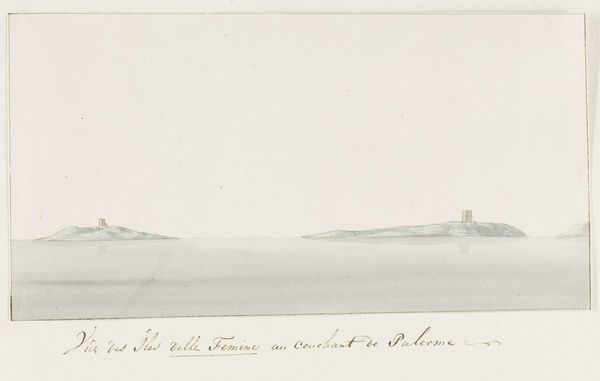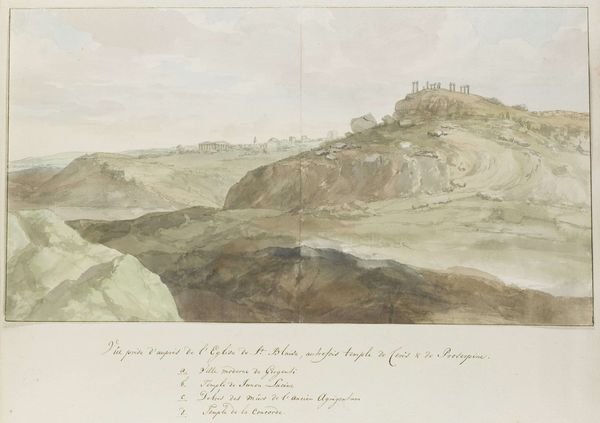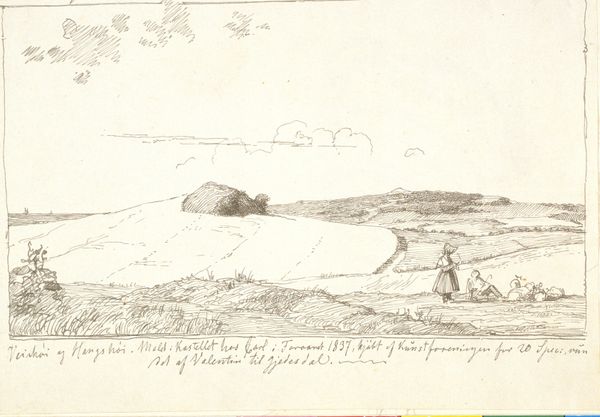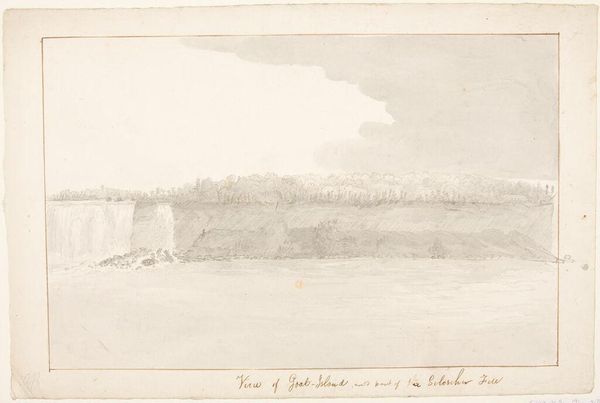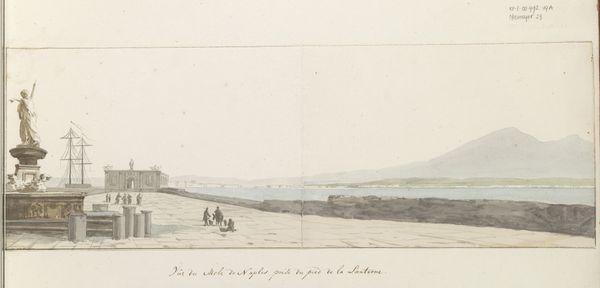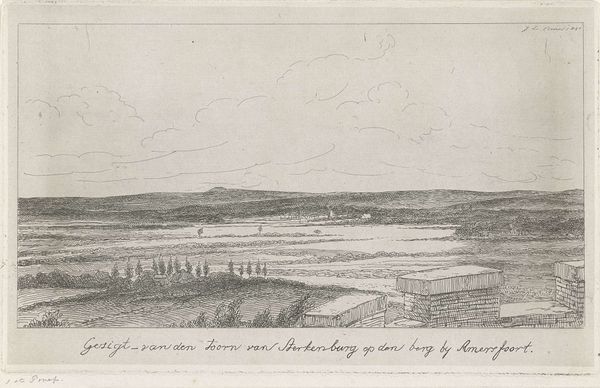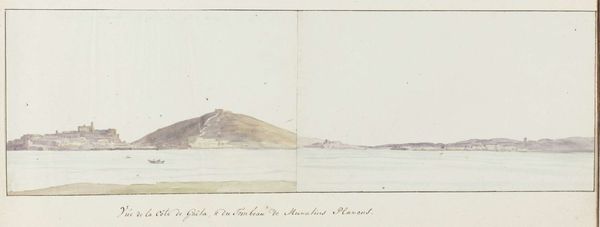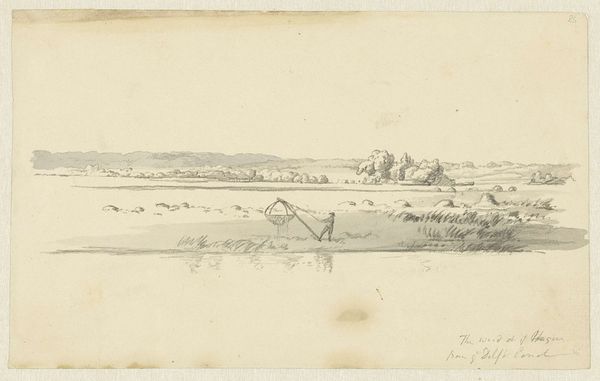
watercolor
#
neoclassicism
#
landscape
#
watercolor
#
watercolour illustration
#
watercolor
Dimensions: height 200 mm, width 375 mm
Copyright: Rijks Museum: Open Domain
Curator: This watercolour by Louis Ducros, dating back to 1778, is titled "Uiterste punt van grote haven van Syracuse," which translates to "Extreme point of the grand harbour of Syracuse." It resides here at the Rijksmuseum. What is your initial response to it? Editor: An instant stillness. The gentle washes of colour lend it a tranquil atmosphere, almost like looking at a memory. There’s a quiet spaciousness despite the detailed inscription on the lower portion. Curator: The inscription’s inclusion really draws attention to the social framework in which Ducros operated, catering to a clientele that was undertaking grand tours through Europe and its peripheries. Depicting the harbor was very much connected with ideas of classical antiquity as a spectacle to be seen, collected and interpreted. Editor: Yes, I agree, but I'm also drawn to how he chooses to frame this "extreme point." It has a somewhat forlorn symbolism to me. The remnants of classical civilization are evident, referenced even in the inscription, yet rendered almost faint, like echoes on the horizon. Curator: This softness definitely diverges from some more robust neoclassicist visions. Perhaps Ducros intended to underscore the shifting tides of power? Sicily had undergone so much geopolitical turmoil, from antiquity to his contemporary moment, and even during his lifetime as an artist. Editor: The choice of watercolour, a more delicate medium, seems significant in this light. There is also the subtle use of linear perspective that helps underscore a feeling of vastness. This is interesting for our contemporary ideas about landscape art: Is there a nostalgia and romanticism creeping in? Curator: Perhaps nostalgia mixed with the stark reality of shifting geopolitics. The harbour would have evoked a complex set of social realities, marked both by trade and also foreign intervention. Ducros highlights these issues of power within an appeal to beauty. Editor: I agree; beauty is an interesting vehicle through which to communicate the fraught histories and ever changing nature of empires, then and now. Thank you, this has been fascinating. Curator: It's interesting how these works resonate anew within a completely different era. It definitely forces a viewer to ask many different questions about their own positioning as inheritors to a contested landscape.
Comments
No comments
Be the first to comment and join the conversation on the ultimate creative platform.

